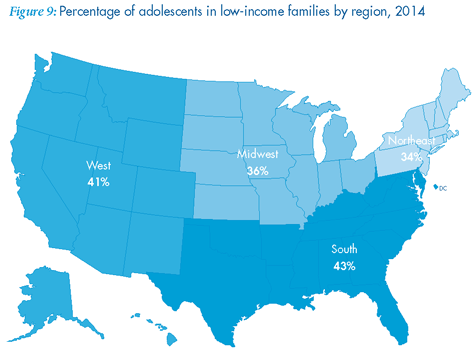Poverty in the United States
The poverty statistics for children in this country have reached alarming rates with a staggering 16 million children living at or below the poverty line in 2016. The reasons for these conditions are varied and don’t always require families to be out of work. Many of these parents are working, but their wages are too low or their unemployment status too unstable to maintain enough income to cover daily living expenses. For families who aren’t gainfully employed in some capacity, work opportunities are sparse and making an income is a challenge. Other factors, such as inadequate housing, community services, support systems in place, and violent, neglected neighborhoods, contribute to the growing poverty rate in American cities.

A child’s education and well-being are both negatively impacted by impoverished conditions. Academic outcomes are far less successful on average than with children who have access to resources. Their health is also affected, as children in low-income and poor families are more likely to be exposed to cigarette smoke and lead. These families are also food insecure, so children suffer malnutrition. All of these components come together to provide a very steep uphill climb toward academic achievement. Children who do not have access to simple resources for life are also severely disadvantaged when it comes to educational resources. Simple things, such as books, are not available for these children to read, and there are fewer books in the homes of impoverished families. Additional resources from school supplies to adequate transportation for a child to get to school play a role in the obstacles that impoverished families need to navigate.
With more people living in cities than ever before, the disadvantaged have a very difficult time surviving in an environment where so much of the population has migrated. Parents who don’t have sufficient educational preparation to find a good job rely on social services to help, but children living in these conditions have a tough time trying to rise above their situation. In some cases, a high value was never placed on education, so parental involvement is low. For others, parental involvement is a challenge because the parents do have jobs but work long hours to put food on the table. This can also present a similar difficulty for children to pursue an education.
The Latino Family Literacy Project is passionate about being part of the solution against poverty, and has developed an award-winning parent program specifically for Hispanic parents that includes the use of award-winning books.
The Latino Family Literacy Project understands the importance of parental involvement and provides staff training to use a bilingual family reading program. This program will guide teachers to work with students and parents from lower socioeconomic backgrounds to improve reading skills at home. If you’re interested in finding out more information about this program, please plan on attending a workshop or webinar, or schedule one in your area. They offer both online webinar training and in-person workshops. If you would like to preview a few of the books used in the program, please visit Lectura Books Youtube page.
For the latest information regarding parental involvement, visit our Facebook and Twitter. We look forward to hearing from you!
